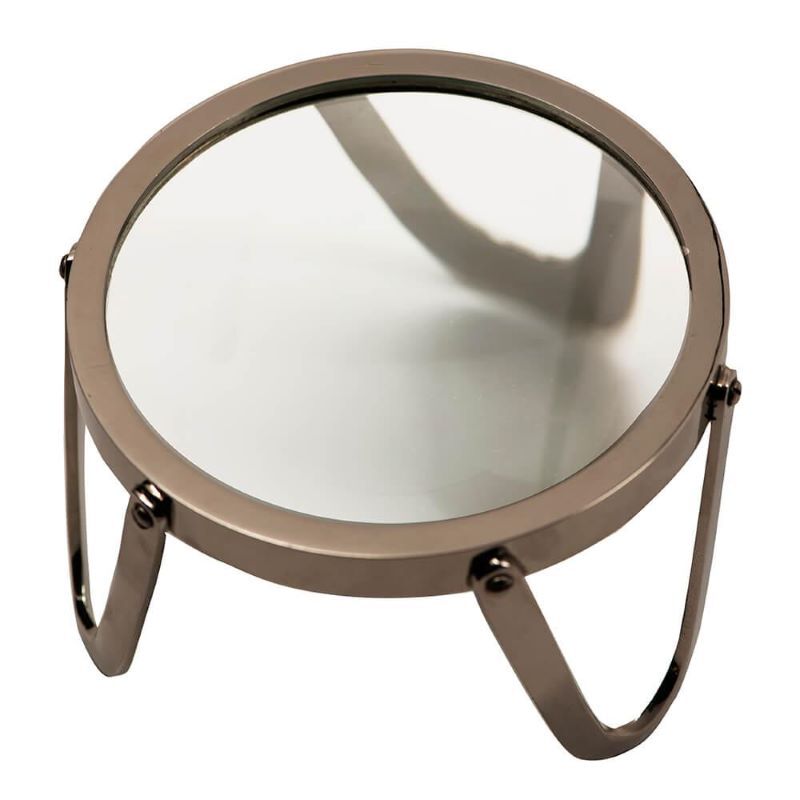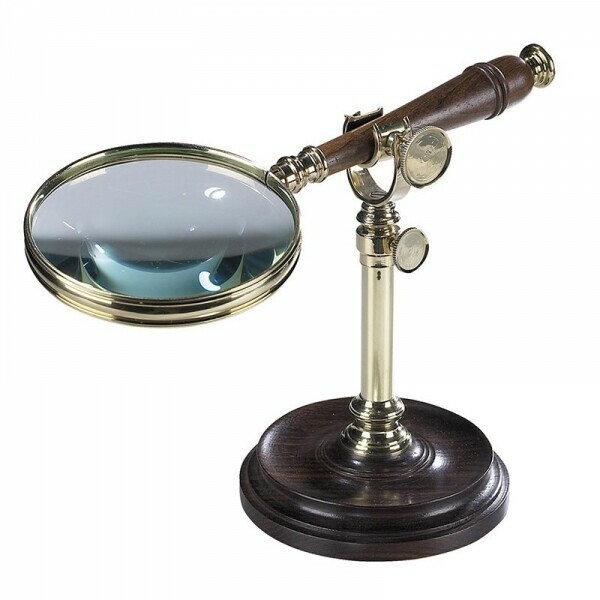Few tools have captured human imagination quite like the magnifying glass. This simple yet ingenious device has helped us peer into worlds both microscopic and mysterious, transforming how we examine everything from ancient manuscripts to forensic evidence. Join us as we explore the fascinating journey of this remarkable optical instrument that continues to serve countless purposes across diverse fields.
The magnifying glass represents far more than a simple lens—it’s a gateway to discovery. Whether you’re examining the intricate details of a Victorian stamp, investigating the delicate structure of a flower petal, or helping a child marvel at the world of insects, this versatile tool opens up realms of wonder that remain invisible to the naked eye.
What Is a Magnifying Glass?
A magnifying glass is an optical instrument consisting of a convex lens mounted in a frame, typically with a handle for easy manipulation. The convex lens—thicker at its centre than at its edges—bends light rays to create an enlarged image of objects placed within its focal length.
The magic lies in the physics of refraction. When light passes through the curved lens, it converges towards a focal point, creating a virtual image that appears larger than the original object. The degree of magnification depends on the lens’s curvature and the distance between the object and the lens. Most standard magnifying glasses offer magnifications between 2x and 10x, though specialised versions can achieve much higher levels.
Modern magnifying glasses come in various configurations. Handheld models remain the most common, featuring a single lens with a comfortable grip. Desktop versions include adjustable arms and LED lighting for extended use. Specialised variants incorporate multiple lenses, measurement scales, or electronic components for specific applications.

Discovering the Many Uses of Magnifying Glasses
The applications for magnifying glasses span an impressive range of fields and activities. Each use demonstrates the tool’s remarkable versatility and enduring relevance in our technology-driven world.
Scientific and Medical Applications
Research laboratories rely heavily on magnifying glasses for preliminary examinations before moving to more sophisticated equipment. Biologists use them to study plant structures, insect anatomy, and mineral formations. Medical professionals employ magnifying glasses for dermatological examinations, wound assessment, and surgical procedures requiring enhanced visual precision.
Forensic investigators turn to magnifying glasses when examining evidence at crime scenes. Fingerprint analysis, document examination, and trace evidence collection all benefit from magnification. The tool’s portability makes it invaluable for fieldwork where larger microscopes prove impractical.
Arts and Crafts
Artists and craftspeople have embraced magnifying glasses as essential tools for detailed work. Jewellers rely on them for setting stones, engraving designs, and quality control. Watch repairers find them indispensable for working with tiny mechanical components. Textile artists use magnification when creating intricate embroidery, cross-stitch patterns, and detailed fabric work.
Model builders and hobbyists appreciate the enhanced visibility magnifying glasses provide when working with miniature components. From assembling model aeroplanes to painting figurines, these tools enable precision that would be impossible otherwise.
Reading and Education
Perhaps the most widespread application involves reading assistance. People with visual impairments use magnifying glasses to read books, newspapers, and documents. Students studying maps, diagrams, or detailed illustrations benefit from the enhanced clarity magnification provides.
Teachers frequently use magnifying glasses in science lessons, encouraging students to examine leaves, rocks, and insects. This hands-on approach to learning fosters curiosity and scientific thinking whilst making abstract concepts tangible and exciting.
Professional and Technical Fields
Electronics technicians use magnifying glasses when soldering circuit boards, identifying component markings, and troubleshooting minute connections. The precision required in modern electronics makes magnification not just helpful but essential for quality work.
Stamp and coin collectors depend on magnifying glasses to assess condition, identify varieties, and detect forgeries. The value of collectibles often hinges on details invisible to the naked eye, making magnification crucial for accurate evaluation.
Tracing the Rich History of the Magnifying Glass
The story of the magnifying glass begins in the mists of antiquity, intertwining with humanity’s quest to understand and manipulate light itself.
Ancient Foundations
Archaeological evidence suggests that humans have experimented with magnification for over 2,000 years. The ancient Assyrians crafted rock crystal lenses around 700 BCE, though their exact purpose remains debated among historians. Roman writers, including Pliny the Elder, documented the use of glass spheres filled with water to magnify text—an early precursor to the modern magnifying glass.
The Roman emperor Nero reportedly used an emerald to help him see gladiatorial contests more clearly, though whether this served as magnification or simply sun protection remains uncertain. These early experiments laid the groundwork for future optical developments.
Medieval Breakthroughs
The true development of magnifying glasses accelerated during the medieval period. Islamic scholars made significant contributions to optical science during the 9th and 10th centuries. The Persian mathematician Ibn Sahl described the law of refraction in 984 CE, whilst the Arab scientist Ibn al-Haytham (known in the West as Alhazen) revolutionised the understanding of optics through his comprehensive studies of light and vision.
European monasteries became centres of lens development during the 13th century. Monks, copying manuscripts by candlelight, desperately needed tools to ease eye strain and improve accuracy. The invention of reading stones—polished crystal or glass segments—marked a crucial step towards the modern magnifying glass.
Renaissance Innovation
The Renaissance period witnessed remarkable advances in lens technology. Italian glassmakers in Venice and Florence developed superior manufacturing techniques, producing clearer and more precisely shaped lenses. The combination of improved materials and better understanding of optics led to more effective magnifying glasses.
Roger Bacon, the English philosopher and scientist, wrote extensively about the properties of lenses in the 13th century. His work “Opus Majus” described how properly shaped glass could magnify objects, providing theoretical foundations for practical applications. These scholarly contributions helped transform magnifying glasses from curious novelties into scientific instruments.
Scientific Revolution
The Scientific Revolution of the 16th and 17th centuries elevated the magnifying glass to new prominence. Scientists like Antonie van Leeuwenhoek used simple magnifying glasses to make groundbreaking discoveries in microbiology. His observations of bacteria, sperm cells, and other microscopic life forms revolutionised biological science.
The development of compound microscopes built upon magnifying glass principles, though simple magnifiers remained valuable for their portability and ease of use. The Royal Society of London, founded in 1660, encouraged the use of optical instruments in scientific research, further promoting the magnifying glass as an essential tool.
Industrial and Modern Era
The Industrial Revolution brought mass production techniques to lens manufacturing. Improved glass quality and precision grinding made magnifying glasses more affordable and widely available. The 19th century saw the development of specialised versions for specific trades and professions.
The 20th century introduced synthetic materials, coated lenses, and LED lighting systems. These innovations enhanced performance whilst reducing weight and improving durability. Modern magnifying glasses incorporate ergonomic designs and electronic features that would have seemed magical to earlier users.
Exploring New Worlds Through Magnification
The magnifying glass continues to evolve, adapting to contemporary needs whilst maintaining its fundamental simplicity. Digital magnifiers now compete with traditional optical versions, offering zoom capabilities and image capture functions. However, the classic handheld magnifying glass retains its appeal due to its reliability, affordability, and ease of use.
Consider adding a quality magnifying glass to your toolkit, whether for professional use, educational exploration, or personal hobbies. From examining the intricate patterns of butterfly wings to reading the fine print on important documents, this versatile instrument opens doors to discoveries waiting just beyond normal vision.
The magnifying glass stands as a testament to human ingenuity—a simple tool that has expanded our perception of the world for centuries and continues to serve new generations of explorers, scientists, and curious minds.
Follow Us on Instagram for Daily Inspiration 💙

